Essential mechanics in Tlatoani: Aztec Cities; materials, logistics, resources, and city-building strategies for optimal growth.
Tlatoani Aztec Cities: Mechanics Guide
Credit: @Bellwood Studios. A guide to Tlatoani’s mechanics.
Transport, Roads and Walking Range
In Tlatoani, most buildings require road access to operate effectively and have range limits for delivering goods and services or acquiring resources from other structures. Hovering over a building will show a preview of its connection to the road network.
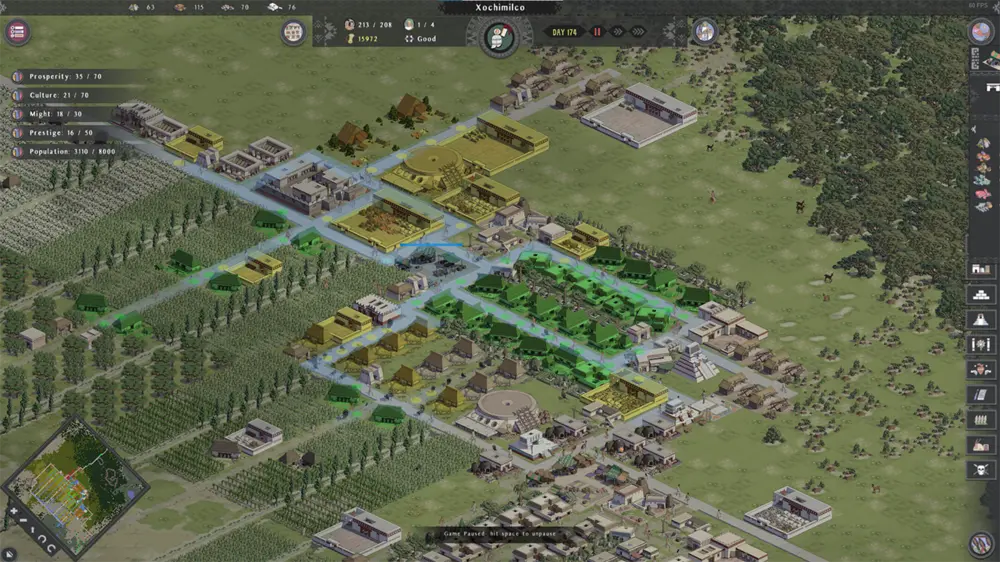
Color Definitions:
- Little Green dot: can deliver goods or services there
- Little Yellow dot: can obtain goods/essentials there
- Little Blue dot: the building’s own entrance
Most of your citizens will have jobs working at specific buildings. Workers living in housing will travel any distance to get to work, but bear in mind that long commutes are inefficient and will limit housing development- the Trip Time Overlay can help to keep tabs on this.
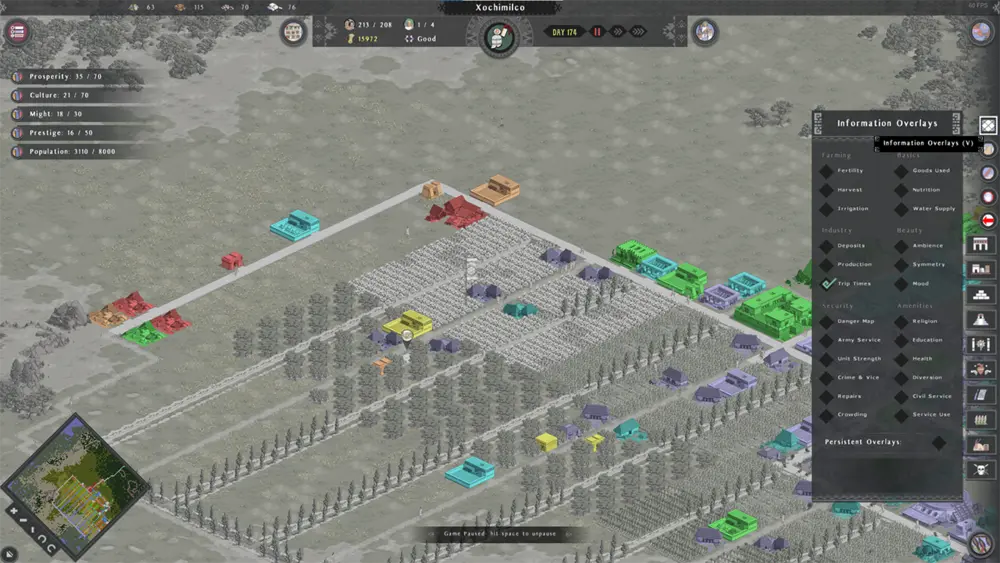
The workers at some buildings can act at unlimited range:
- Mason Yards and Goldsmiths can help with construction at any distance
- Hunters will hunt at any distance, and deliver to granaries anywhere
- Soldiers at the Barracks can be ordered to maneuver anywhere on the map
- Traders will lead Caravans to buy or sell goods to and from other cities
Finally, storage venues (like Porter Yards, Granaries, etc.) will deliver to and from other storage venues over any distance. They will only deliver to non-storage facilities if they are within the usual road-access range.
Construction
Mason Yards are your primary construction facility, and need to be supplied with clay, timber and stone in order to perform their duties effectively. The porters at storage facilities can also help with construction projects, but will only do so locally, so it’s best to have mason yards spread at intervals across your city.
Note: That you can mark terrain features such as trees and rocky outcrops to be razed, and a portion of their raw materials will be salvaged- this can be useful in a pinch where you lack construction materials.
When placing buildings, take care not to wall in your workers by mistake, or order construction in inaccessible areas!
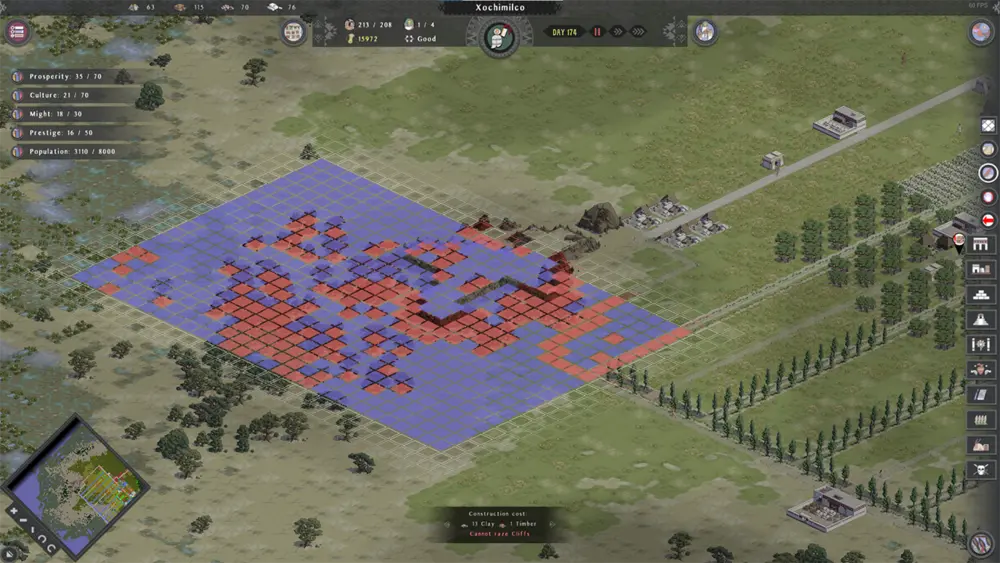
Raw Materials
The workers at your Sawyers and Stone Quarries need direct access to forest and rocky outcrops in order to harvest and process their raw materials.
Clay Pits only need to be placed near water, and Obsidian Mines only need to be placed near rocks.
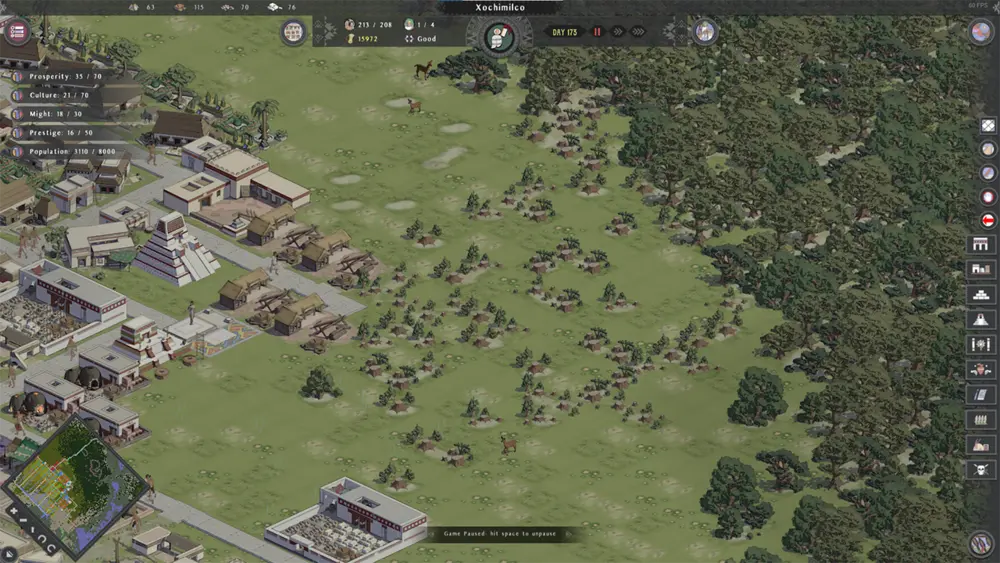
Trees, Crops and Farmland
Crops need to be planted within a certain range of Peasant Housing, and there is also a limit to the total number of fields a given house can tend to (32 tiles). Fields will always be assigned to the closest peasant house within range. Hovering over peasant housing will highlight the fields that building has been assigned for tending.
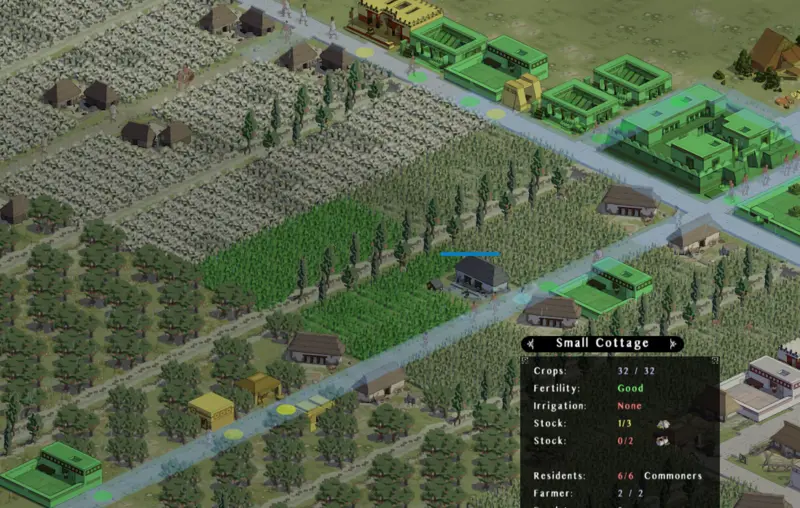
Most crops can be planted and harvested in the same year without a great deal of preparation, but some crops, like Fruit, Willow and Cacao trees, grow faster when spaced apart from other trees and take years to fully mature. Planting them in rows or small islands is usually the best way to cultivate them.
Some crops benefit from having canals built within range while crops like Maguey require dry land, not near water or canals, though they can be farmed on fertile lands. Fertility can be viewed from the overlay.
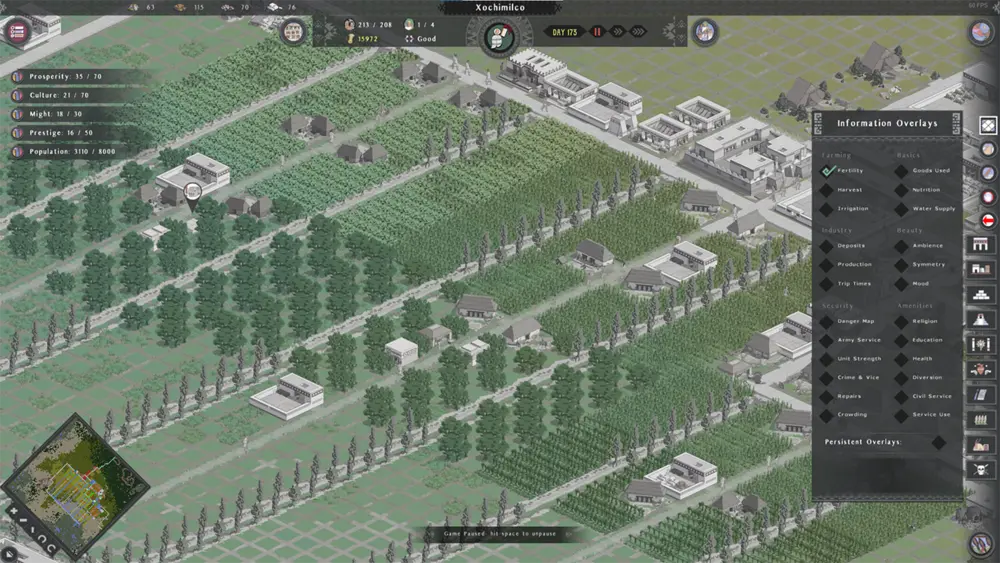
Storage Logistics
Storage facilities include Trading Posts, Porter Yards, Porter Stops, and Granaries. As mentioned, they can deliver goods to and from each other over any distance, which makes their placement particularly important for ensuring the stability of larger cities (make sure your storage facilities are within range of each other for best efficiency).
How they behave is defined by their storage orders for a given good:
- Getting facilities will actively fetch the goods in question, not just locally, but also from other storage facilities. They will still deliver the goods as needed to local industries, markets or service-venues that consume it.
- Accepting facilities will passively store the specified good if it’s produced locally, and make it available for ‘get’ orders by other storage facilities as well as still delivering as needed to local industries, markets or service-venues.
- Balancing facilities will switch between ‘getting’ and ‘accepting’ behaviors depending on whether more or less than half the stock-limit of the good is present. For example, a granary set to ‘balance’ maize with a stock limit of 20 will fetch maize from other storage sites if less than 10 loads are currently stored, and passively accept it otherwise.
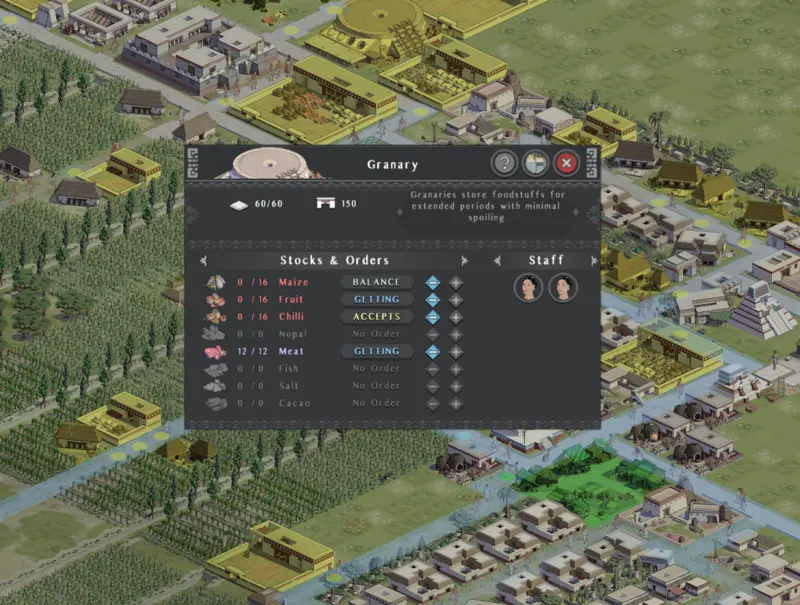
Industrial areas should generally have a porter yard or trading post nearby to store and distribute finished goods or secure raw materials.
Markets also usually benefit from a porter yard to obtain consumer products such as pottery, cloth, furniture and pulque.
Farming areas should have granaries strategically situated in easy range of the surrounding farm housing, to ensure efficient and prompt delivery, and granaries in turn should be close enough to markets to ensure that food is smoothly distributed.
Porter yards and even trading posts can in principle be used for the same purpose, but granaries store more food in case of famine and minimize spoilage, so they’re generally preferred for larger settlements.
Services
Service venues, such as your civil-service, entertainment, health-related and religious facilities, have a limited service-capacity, so as your population grows within a given housing block you are likely to need more of them.
Many service buildings, such as Shrines, provide supervision to other industries or service buildings, so it may be worth placing them with some thought to synergize well with other sectors of development.
Mason Yards can also patrol local buildings to reduce their risk of fire and cost of maintenance, and Well Dippers also help with fire control, so it’s worth paying particular attention to their placement.
Finally, don’t forget about your Collectors! They can gather tax and Gold from business and industry, as well as your housing areas. This is a key source of revenue for larger settlements.